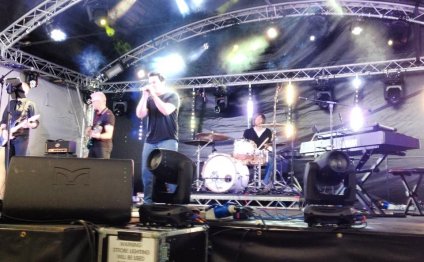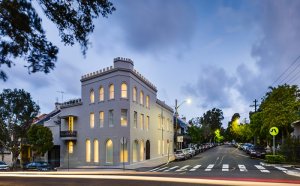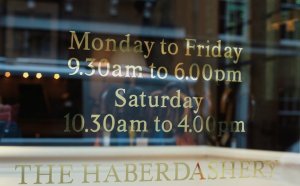
Windsor Castle, Carshalton
Contributed by People in story: The Queen Mary's hospital for Children in Carshalton Location of story: Carshalton, London Article ID: A2099315 Contributed on:
Extract from The book "A Vision of Healing" by Ernest Earl - see www.qmhcarshalton.net
The Queen Mary's Hospital for Children
WAR YEARS
"Hope is grief’s best music"
THE SECOND WORLD WAR 1939 — 1945
The Second World War caused death and destruction throughout the world. Queen Mary's Hospital for Children, like so many other hospitals and homes was hit by German bombs and rockets, in wave after wave of attacks by enemy aircraft and VI and V2 rockets.
Queen Mary's was the most heavily bombed hospital in London. Various reasons have been given for this: its close proximity to Croydon Airport, its aerial appearance being similar to the layout of army barracks, and the fact that German bombers discharged their surplus bombs before flying back over the Channel after attacking London. The first bombing of the hospital occurred in 1940.
Eventually, with the new threats posed by the VI and V2 rockets, total evacuation of the hospital was decided upon on July 21st 1944 and the children taken by coach and train to a number of locations in England and Wales. The school was split between Dryburn Emergency Hospital at Durham and Scotton Banks Hospital, Knaresborough, Yorkshire.
After VE Day 1945, the premises were re-occupied, but the war damage meant that the beds were reduced from 1, 284 to 840.
Pictures
see
Patients taken out on the Ward Veranda
Photograph taken on the day that the British Prime Minister, Neville Chamberlain, and the Western Allies declared war on Germany, September 3rd 1939, following the attack on Poland on September 1st.
Kindly contributed by Mr WA Neil at my exhibition and book signing at the Sutton Heritage Centre.
The following photographs of the Second World War and Post War years were kindly contributed by: Miss J F Howell, Staff Nurse Rita Grassi (nee Kiewe), the County Durham Health Authority, the Pathology Laboratory at the New Dryburn Hospital and Nurse Pauline Richmond.
Four pictures
(see
Nurse Rita Kiewe with baby on D8 — 1943
Nurse Rita Kiewe outside Chapel - Oct. 1943
1943
Rita Kiewe - Staff Nurse 25-7-1947
18 pictures………………
(see
QUEEN MARY’S
MOST FREQUENTLY BOMBED OF ALL LCC
AND MDB HOSPITALS AROUND LONDON
Places bombed that surrounded Queen Mary's
Croydon Airport
Denmark Road
Anglesey Gardens
Dalmeny Road
Acre Lane
Rothfield Road
Kings Arms Pub Carshalton High Street
behind Windsor Castle
between Salisbury Road, War Memorial Hospital
Erskine Road
Fellows Road
29 Acres
Love Lane
Lavender Road
Farm Lane
Gordon Road
Flying Bombs
Stanley Park Road
Staplehurst Road
Burleigh Avenue
Wallington Garden Green
Ceders Road, Sutton
West Way
V.2.
Just off Boundary Road in to Banstead Asylum (on open ground).
Contiibuted by John Vinn (91 years of age)
Demolition and Rescue Parties Supervisor for Bombs
Over a period of time, 27 V1 Flying bombs fell in Carshalton, killing 25 people. 165 homes were totally destroyed. Rest centres for bombed-out victims were established at Westwenth Hall, Methodist Central Hall, Green Wrythe Lane, Bishopsford Hall and Poulter Park.
The V1s started landing in the middle of June 1944 and the months of June and July saw frequent attacks. Hence the decision to completely evacuate Queen Mary's.
The following reports appeared in Durham Advertiser on August IIth 1944. Shortly after, approximately 200 of the Queen Mary's children were evacuated to Durham.
I can only assume that the sickly children referred to here came from Queen Mary's.
The articles have been reproduced by kind permission of Mr Peter Barron, Editor of the Northern Echo.
Emergency Rest Centre
The emergency rest centre was prepared and conducted for the Durham County Public Assistance Committee by Mr A S Smith (relieving officer), with the help from his colleague, Mr Brains, and a large number of voluntary helpers. These included Mr W N Illingworth (Officer in charge), Mrs Hudson (leader of the women personnel), Miss Viola Fleming, teachers and the caretaker of the City Senior School, Miss Ryans and members of the staff of the school canteen, ladies resident in and near Whinney Hill, a number of boy scouts and boys and girls of the City Senior School. In its co-operation with the City Council, the rest centre had the help of Miss Holliday in the provision of meals. The rest centre organisation was responsible for the domestic arrangements, such as those for meals and sleeping, washing, recreation and ‘the personal touch’. In looking after the babies and the sickly and slightly injured evacuees, and in assisting the medical examinations, the rest centre had the help of Nurse Tredennick, Nurse Spence, Mrs Barrett and her staff, Nurse Sakell, Nurse Holmes, Miss Bradley, Mrs Uzzel and Mrs Davies.' Air raid wardens, under the superintendence of Mr George Greenwell (chief warden), dealt with the luggage of the evacuees, and some wardens remained all night.
Some of the mothers asked whether they were in Scotland or on the Border, and seemed astonished to hear that another county came before Scotland. On hearing that they were only ten miles from the East Coast their faces fell, for 'the East Coast' to them meant a danger zone. They were taken to the school geography room and shown a map. They had heard of Wales as a safe place for evacuation, but on seeing that Durham was further from London than even Wales they declared, "Well, the Government knew what they were doing when they sent us here!" One of the escorts who accompanied the evacuees said, "You people of the North have a reputation for giving a kind and hearty welcome, and you have lived up to it today."
Share this Post
Related posts
Windsor Castle, Paddington
Converted pub smashes Paddington price record The former Windsor Castle Hotel has sold for about $13 million. The Paddington…
Read MoreWindsor Castle Visiting Hours
Drive to Windsor Castle in the Royal Borough of Berkshire for the start of this full-day tour of the palaces of the English…
Read More










